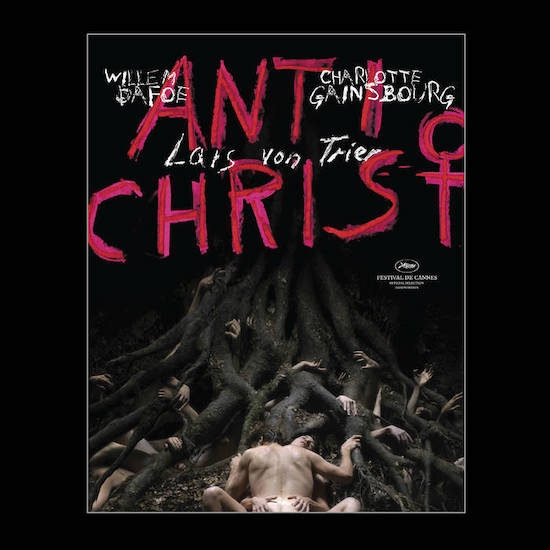It’s the song that will stick in your head, long after the final credits have rolled. ‘Lascia ch’io pianga’, the aria from Handel’s opera Rinaldo, is one of the most beautiful songs in the composer’s oeuvre. Sung by the crusader’s daughter Almirena while held captive by the Armida, the Queen of Damascus, “Leave me to weep,” she sings, “in my suffering I pray for mercy.” In the film Antichrist the track is used to similarly heartbreaking effect, soundtracking the super-stylised lovemaking of the two leads, Charlotte Gainsbourg and Willem Defoe’s ‘He’ and ‘She’, edited in parallel with the fatal plunge of their baby from a high window into the falling snow beneath.
Cold Spring Records’ edition of the Antichrist soundtrack gives us a beautiful rendition of that aria, performed by Bjarte ‘Barokksolistene’ Eike (violin), Tuva Semmingsen (mezzo soprano), Karina Gauvin (soprano) and Tempo Rubato ensemble at the Kastelskirken, Copenhagen, in January 2009. But it’s the in-between bits, the judders and rumbles and low howls drifting somewhere undecidable between composed music and sound design, that will haunt you. Kristian Eidnes Andersen has been a regular member of Lars von Trier’s sound department since 1996’s Breaking the Waves. As well as his regular gig with von Trier, he has also mixed, designed and edited sound for such classics of new Danish cinema as Søren Kragh-Jacobsen’s Dogme 95 film Mifune and Nicolas Winding Refn’s (2013) masterpiece Only God Forgives. But for the most part, his ‘composer’ credits on IMDB are restricted to documentaries and TV. With the notable exception of Antichrist.
As soundtrack albums go, Antichrist is a short one. Just one side (the other is etched with the words “nature is satan’s church” in a gothic typeface), and – aside from the Handel aria and its reprise – only five short tracks. But it certainly packs a punch. Andersen’s music here is rich, elemental and utterly terrifying. Heavy bass drones are smeared and slurred across the stereo spectrum. Quaking and crackling sounds will have you worrying for the integrity of your speakers. A high whistle, rising steadily to the pitch at which teeth set on edge, triggers all sorts of reflexive lizard brain responses. I remember well going to see Antichrist at the cinema when it came out and it was Handel’s song that stayed with me. It takes a second or third viewing to recognise the work being done by all the bits in-between, the un-music, the audiable, the hum of the world. Silence has never sounded so uncanny.


